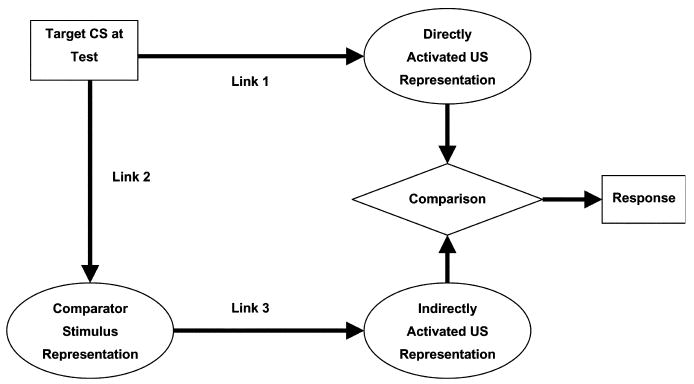Fig. 1.

The original comparator hypothesis. Links represent: (1) the target CS–US association, (2) the target CS–comparator stimulus within-compound association, and (3) comparator stimulus–US association. At test, presentation of the target CS evokes two representations of the US, one directly (through Link 1) and another indirectly mediated through a representation of the comparator stimulus (Links 2 and 3). The strengths of the directly and indirectly activated US representations are compared to determine responding to the target CS.
